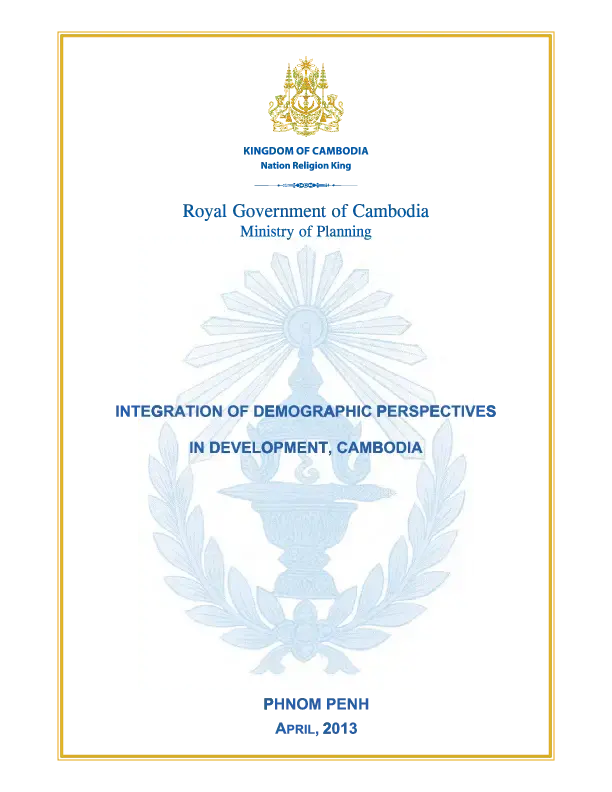The Royal Government of Cambodia since 1996 has made substantial efforts to integrate right'sbased approach in population and development planning. The Socio-Economic Development Plans followed by the Cambodian Millennium Development Goals and the subsequent Rectangular Strategy and Five-Year National Strategic Development Plans (NSDPs) are testimony to this fact.
Interestingly, it is to be noted that the focus of planners, given the multi-faceted linkages between population and development, has been to encourage holistic and inclusive development planning by integrating demographic dynamics into the planning process.
Analysis of the plausible impact of demographic dynamics has revealed that there is a need to refocus on strategic social and economic sectors and create opportunities for the development of youth and women, as it is expected to yield substantial results and pave way for faster economic growth under the circumstances that the country is going through a demographic window of opportunity.
The government therefore should plan to ensure necessary skill-sets of the youth and at the same time, invest on developing an educated human capital in line with the futuristic national and global economies. On the contrary, there is a need to start thinking of the elderly population and mainstream elderly related policies and programmes within the sectoral initiatives, as the proportion of elderly is going to increase in the coming years.
A good balance between social and economic investments is proposed but initially tilted more towards infrastructure expansion and development and enabling expansion of SMEs, managingurbanization and expanding agriculture and allied activities while on the other, development of the social sector i.e. education, especially higher secondary, tertiary and technical/professional education, science and technology, promoting health sector reforms and strengthening of socialwelfare schemes for human capital development have been proposed.


